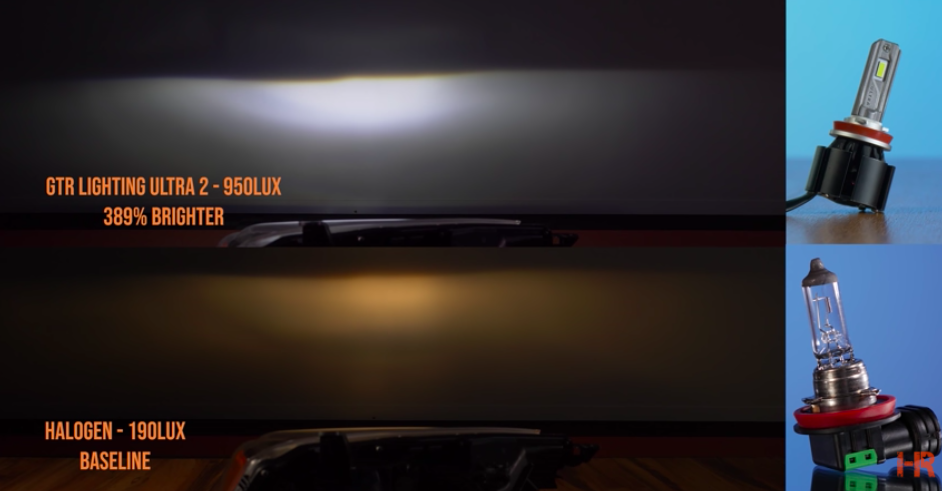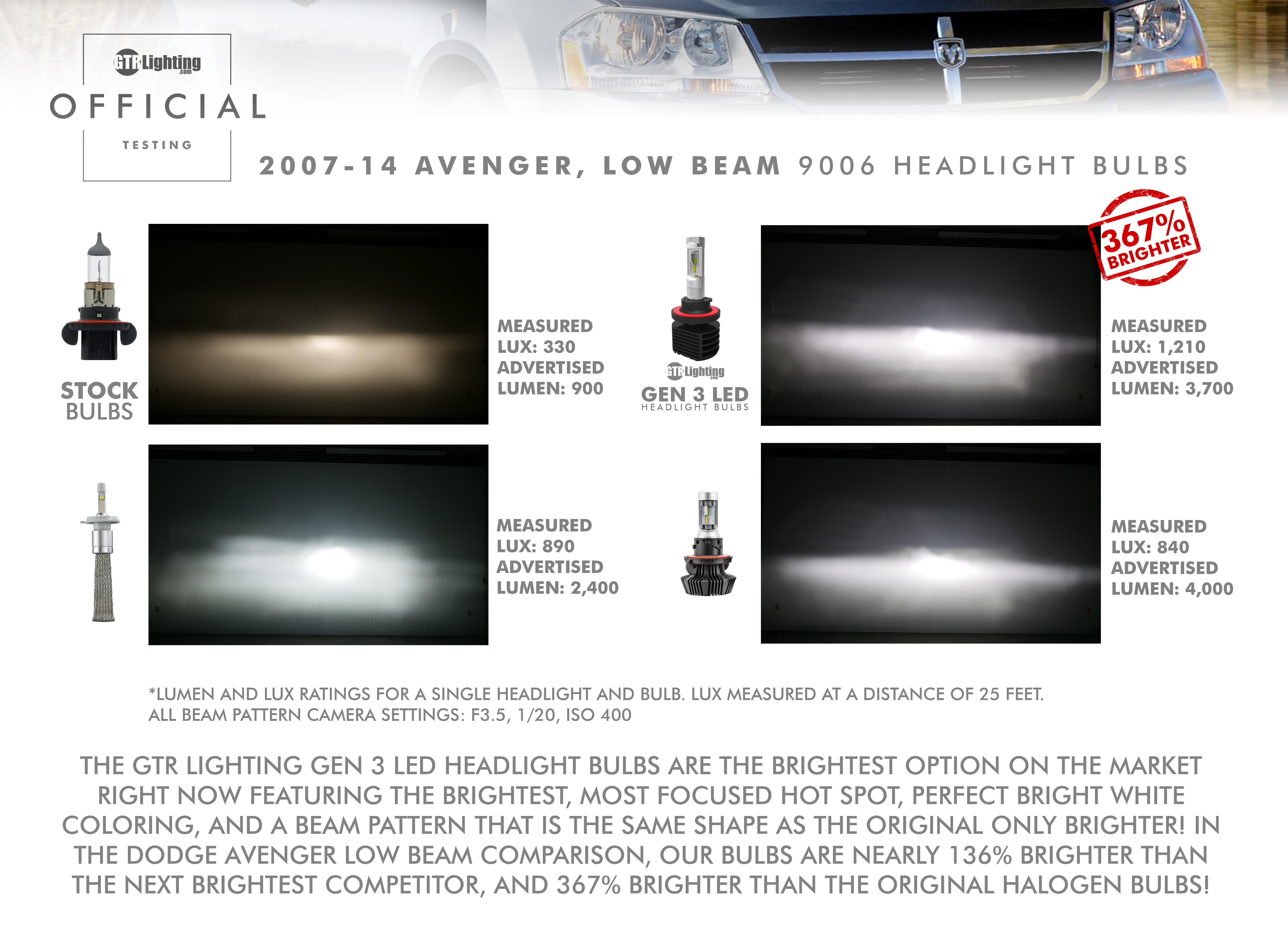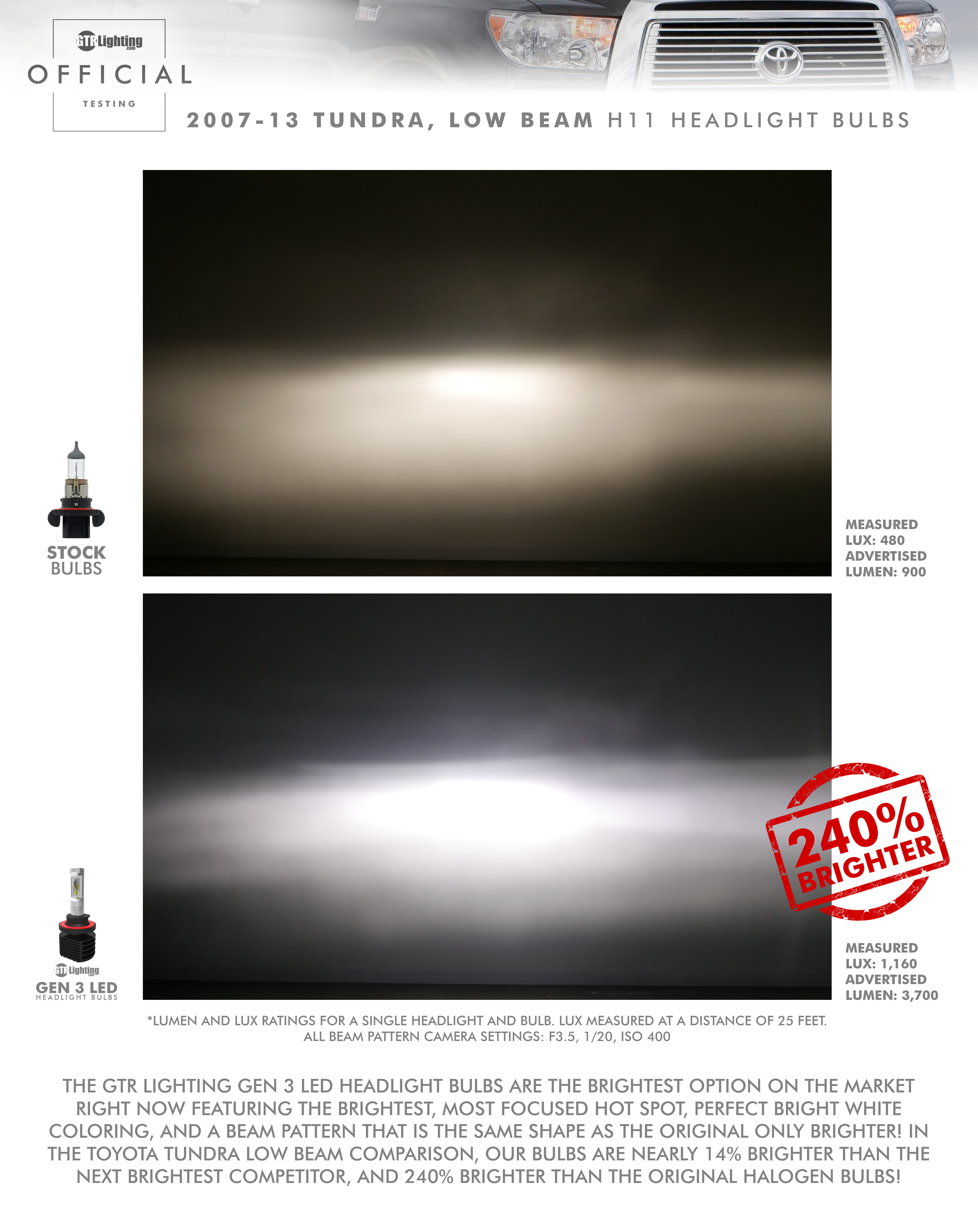What's the Difference Between Lumen, Lux, and Candela?
When shopping for better headlights, everyone wants to find the brightest option available. While many brands claim they are the brightest, today we will paint a better picture of what “brightest” means. Though that brand may claim 20,000 lumens, many other scientific factors can affect the actual light output. Stick with us for a moment and you will soon be a pro when it comes to understanding the true meaning of brightness.

To understand the science behind lights and what creates their brightness, we will be going over three different terms – Lumen, Lux, and Candela.
What is LUMEN?
Measuring lumens focuses on the light source, for example, we can reference LED bulbs. The lumens are a measure of how much light is coming from the LED chips. This is the term that most people are familiar with when it comes to shopping for new lighting. However, this is the worst way to judge how bright a light is. By definition, a lumen is a unit of measurement for luminous flux which is a measurement of the total quantity of visible light emitted by a light source. We know that sounds scientific, but don’t worry. We will make this explanation as simple as possible.
Lumens are measured inside of a device called an integrating sphere. The bulb being tested would be placed inside the sphere to accurately measure the brightness coming from the bulb. Since the light is captured from all angles inside the sphere, the lumen is easy to calculate. However, your headlight does not use 360-degree sphere technology. At this point you might be asking yourself, “Doesn’t that mean the bulb with the highest lumens will be the brightest bulb overall?”
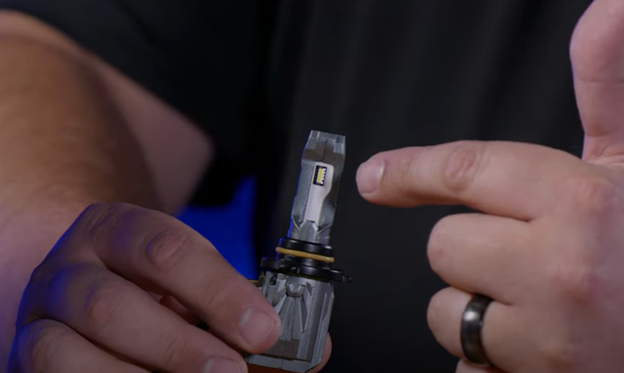
However, lumens do not measure how the bulb itself interacts with the optics in the headlight. This means that while the bulb is 20,000 lumens… there is a possibility that only 5,000 of those lumens are actual usable light you see on the road. To give you a visual idea, let’s imagine you’ve powered on an LED bulb.

If you could measure all the brightness coming off this bulb, that would be considered the lumen measurement. It does not matter if we are talking about LED, HID, or halogen, each light source creates a certain number of lumens. What lighting enthusiasts care about is the optics once the bulb has been placed into the headlight housing.

In this case, the optics are going to be the reflective surface of the OEM reflector bowl. These optics harness the lumen output from the bulb to create Candela and Lux. Different lumen-rated bulbs in the same headlight have different useable light values. We have tested this in our studio with multiple brands and designs from an H11 bulb. If you would like to watch our H11 testing video, click here. In this video, you can see examples of highly rated lumen bulbs having a very low lux rating, and vice versa. Some of the lower-rated lumen bulbs ended up having a higher lux rating. This all comes down to the relationship between the light source and the optics.
Optics are not just reflectors inside of the headlight assembly. If you were to dissect an LED projector headlight, such as the Morimoto XB LED headlights, you would find an LED chip behind each projector. This LED chip has a certain lumen rating – however that light output is going to change once the LED chip is mounted to a board, mounted behind a projector, and shined forwards on your vehicle. This is why we also measure lux.
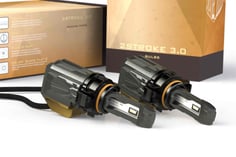 Click here to shop HID and LED bulb upgrades!
Click here to shop HID and LED bulb upgrades!

What is Lux?
Lux, by definition, is the SI unit of illuminance which is a measurement of how much luminous flux is spread out over a given area. This is a term that we use in the lighting industry to let consumers know the real measurable brightness at a certain specified distance. This means that testing needs to happen in a controlled environment; using different tools, different walls, and different meters can result in varied lux ratings. The only way to have legitimate lux readings is by using the same testing environment with the same testing meters.

At Headlight Revolution, we use lux readings to show a percentage change. When completing lux testing in our studio, we will compare the OEM headlight output to the aftermarket light output. In this instance, we measured the beam pattern created from the housing and bulb combination on a wall 25 feet away. From this distance and this position, we can see the lumen amounts from the bulb that are truly being utilized and turned into a usable beam pattern by the headlight housing. By measuring the OEM headlight first, we determine the controlled variable. Once we have the controlled variable, we begin our testing process.
The testing process consists of using different aftermarket light sources, such as bulb replacements, in the OEM headlight unit. We will measure the new lux readings from the aftermarket light sources. Once the changing variables are determined, we will be able to compare the results from our testing. If we are completing our testing in the same spot in our controlled environment, we can easily demonstrate a change in lux to determine which is brighter.

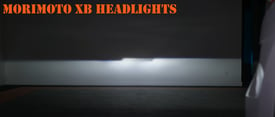
The issue with lux is that it only calculates brightness at a certain point. Lux must be calculated at the highest intensity spot in the beam pattern. However, not having the lux meter placed correctly can drastically change the lux reading results. Even moving the meter forward an inch can cause the meter to pick up an extra 100 lux readings, which would not be an accurate way to measure the real brightness. Therefore, lux is only useful when used for comparisons in a controlled environment. What happens if you want to compare bulbs at different distance points?
To wrap it up, the bulb has lumens and when we put it in a headlight, what we can measure is the lux. The best way overall to compare two products is by using candela measurements.
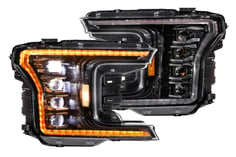 Shop for the best LED headlight assemblies at Headlight Revolution!
Shop for the best LED headlight assemblies at Headlight Revolution!

What is Candela?
Let’s say we are testing an LED bulb 25 feet away from the wall in our controlled test environment. When you take the reading from your lux meter, you are reading the rating of candela at that certain spot. In this case, it would be at 25 feet. However, this is only one little snapshot. To understand the entire candela rating, we would need to refer to the testing of lux at certain distances. Many things can affect the overall candela rating such as beam pattern, quality, and value. If you are only looking for maximum brightness, candela will be the best rating to go by for comparisons. If you want to know which product has the absolute peak intensity, then we would refer to lux. Candela will be used to determine the overall brightness of the light source. 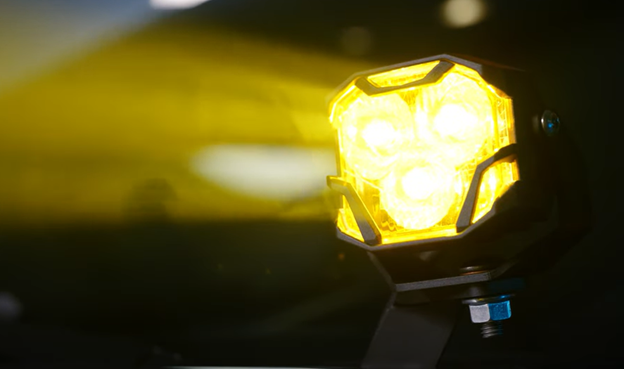
For example, let’s use the Morimoto 4Banger LED pod lights. The LED chips inside of the pod each have their own lumen rating. Where you measure this light output at a certain point in space is called the lux rating. However, all the light that is produced from the pod light is calculated as candela. The candela rating will not change value regardless of the distance during testing. From 5 feet to 25 feet, the candela rating will always remain the same.
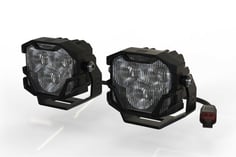 Click here to shop for off-road lighting!
Click here to shop for off-road lighting!

conclusion
Now that you understand the difference between lumen, lux, and candela you can have confidence when comparing your next lighting upgrades. It is important to know these terms so you are not being tricked by other lighting companies. The next time you see someone advertising an LED bulb worth 20,000 lumens, you should think about the actual lux and candela ratings that bulb will produce. Though 20,000 lumens might be incredibly bright, it will not be of any use if that light is not being used properly by the optics of your headlight. It is incredibly important that the light source and optics are compatible to create a street legal beam pattern with minimal glare.
The team here at Headlight Revolution takes the time to get the vehicle in, do the testing, and do all the hard work so you, as a consumer, have confidence in the lighting decision you make. We try to show you exactly what you should expect when buying something new. With this testing, you can be assured our HR-tested products are going to be the best option for your vehicle.
We hope that answered any questions you had about the difference between lux, lumen, and candela. If you are more of a visual learner or would like to see this explanation in action - check out our video covering the differences between lux, lumen, and candela.
Have any questions about any products we mentioned? Contact us today, and our customer support team will be happy to help.
